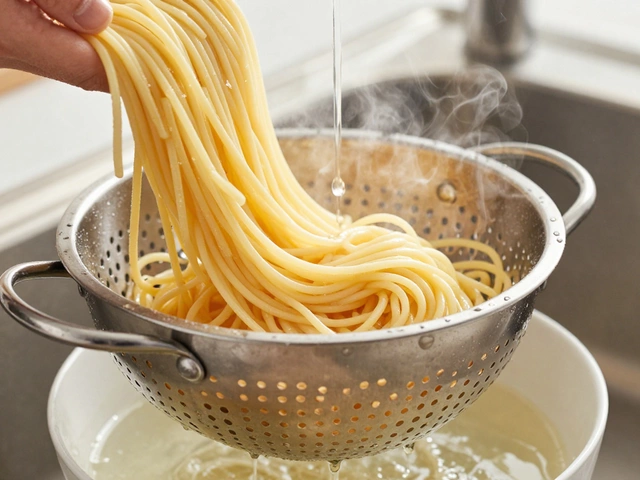Cold, rainy days. Long workweeks. Maybe your kid just lost their favorite toy, or you're homesick. And suddenly you're craving something—something not fancy, not balanced, but specific. Maybe it’s cheesy mac and cheese bubbling on the stovetop, or the cinnamon swirl of your grandma's apple pie you smelled as a kid. Ever wonder why these particular dishes hold such power over us? Or why Finn, my son who claims he hates cheese, will eat three grilled cheese sandwiches after a rough soccer game? This isn't just about taste—it's about comfort, memory, and a little bit of science.
What Does "Comfort Food" Actually Mean?
“Comfort food” isn’t simply any food that tastes good or fills you up. The term first popped into print in a 1966 Palm Beach Post article, describing foods people throw themselves into when under emotional stress. Think about that for a second: this idea is just over half a century old, but the feeling is ancient. The core idea? It’s food that gives more than calories; it soothes, warms, and usually, transports you somewhere safer or happier.
Usually it’s food you ate as a kid, or food tied to big, safe emotions—holidays, birthdays, sleepy Sunday mornings with the family. For me, that’s chicken pot pie. I don’t even remember when my mom first made it, but the smell of thyme and that golden pastry triggers some 'home' software deep in my brain.
But here's a weird twist—what counts as comfort food changes wildly from person to person, and sometimes even day to day. Ask people in different places, and you’ll get wildly different answers. For Elora, my daughter, comfort food flips with her mood: ramen one week, pancakes the next.
So there’s no one-size-fits-all. Comfort food is personal. It’s a mash-up of nostalgia, routine, culture, and sometimes biology. Actually, researchers found people are more likely to crave familiar comfort dishes when they’re feeling lonely—they're seeking connection, even if it’s just through mashed potatoes.
The Science (And Psychology) Behind the Craving
Ever wonder why you want hot fries—not salad—when you’re stressed? Turns out there’s some cool research on this. Scientists at Cornell discovered that comfort food cravings get stronger during emotional lows, and they don’t just distract us; they actually bump up positive feelings. Why? A couple of reasons.
First, most comfort foods are loaded with carbs and fats—the same fuel your body evolved to crave for survival back in primitive times. When you eat fatty or sugary foods, your brain releases dopamine and serotonin, both of which can calm and satisfy you. It’s literally chemical comfort. Some foods even mimic childhood feeding; research in Appetite Journal (2015) showed people who had positive relationships with parents often turned to familiar foods from their family when upset.
And here’s another twist: culture shapes comfort food more than you’d expect. In southern U.S. households, fried chicken or biscuits might be a go-to. In South Korea? Spicy kimchi stew or rice porridge. For my Irish-American side, it’s shepherd’s pie or warm soda bread with too much butter. Shared food memories make comfort food both intensely personal and communal.
There’s also timing. After breakups or loss, people eat comfort food to recreate feelings of security. One study from 2014 even found that people in happy relationships didn’t rely as much on comfort food, so the need for these foods can shift with your circumstances.

Most Popular Comfort Foods Around the World
The comfort food list is a worldwide mashup of flavors, textures, and stories. Crunchy fried chicken in the South. Creamy polenta in Italy. Spicy dal and rice in India. Warm soup noodles in China. Here’s a table with a handful of classic comfort foods and where they most often show up:
| Country/Region | Comfort Food Example | Main Ingredients |
|---|---|---|
| USA | Mac and Cheese | Pasta, cheese, milk, butter |
| United Kingdom | Shepherd’s Pie | Ground lamb, mashed potatoes, peas |
| Japan | Ramen | Noodles, broth, pork, egg |
| Nigeria | Jollof Rice | Rice, tomatoes, onions |
| Russia | Borscht | Beetroot, cabbage, potatoes, beef |
| Mexico | Chiles en Nogada | Poblano chiles, minced meat, walnut sauce |
| India | Khichdi | Rice, lentils, spices |
| China | Congee | Rice, water, chicken, ginger |
| France | Gratin Dauphinois | Potatoes, cream, cheese, garlic |
| Philippines | Arroz Caldo | Rice, chicken, ginger broth |
No matter where you go, most comfort foods are warm, filling, and simple. You don’t see elaborate restaurant plates or rare ingredients. If you ask Finn, it’s chicken nuggets or a grilled cheese with tomato soup, not anything fancy.
It goes beyond taste and temperature. Texture, smell, and even the sound of certain foods matter. Michael Pollan once wrote that our favorite foods often stir our oldest memories. Sometimes just smelling a stew simmering on the stove is enough to lower your heart rate.
At home, sometimes the most comforting dish isn’t even homemade. Takeout pizza after a bad day can beat a four-hour stew when you’re exhausted. The act of sitting together, sharing, and eating—whether home-cooked or bought—is often the secret sauce.
What Qualifies as Comfort Food? Key Ingredients and Qualities
So how do you figure out if a dish is “comfort food” for you—or someone else? Here are a few qualities that come up again and again:
- Familiarity: Most comfort foods are dishes you know well. Childhood favorites, family recipes, regional classics—even junk food, if you grew up with it.
- Cultural or family connection: They remind you of people you care about or times you felt safe.
- Simplicity: Comfort food doesn’t demand perfect presentation or exotic flavors. It’s easy, welcoming, and reliable. (Ever met someone soothed by asparagus foam? Me neither.)
- Hearty and filling: Most are high in carbs, fats, or proteins. You get full. It almost never leaves you still hungry.
- Warmth: Hot foods win here. Even room-temperature comfort foods often have baked, fried, or slow-cooked elements.
- Soothing textures: Creamy, soft, or crunchy-in-a-good-way. Think mashed potatoes, warm banana bread, noodle soups.
- Easy and repeatable: They aren’t reserved for special occasions. You can make or buy them when you need them most.
There are a few near-universal comfort ingredients: potatoes, rice, bread, cheese, chicken, pasta, butter. When your mind wants comfort, often your body wants those basics, too.
Still, there’s room for creativity here. Sometimes comfort food evolves. I heard a story about a guy who started baking his own sourdough during lockdown, and now his ‘comfort food’ isn’t the bread his mom made—it’s the one he taught himself to bake. Lately, even things like bubble tea or vegan chili end up labeled comfort food for Gen Z.
If you want to develop your own comfort food tradition, start by asking yourself: what foods do you crave on tough days? What dishes do you cook with your kids? What recipes always make you feel better?

Tips for Making Comfort Food That Actually Comforts
If your goal tonight is to feel a little more at ease—or to help your family through a rough patch—here’s how to bring the comfort:
- Keep it nostalgic: Dig out your mom’s spaghetti recipe or grandma’s biscuits. There’s no shame in classics. Sometimes, the best *comfort food* is what you grew up eating.
- Prioritize warmth and texture: Even if you’re short on time, go for a dish that’s warm and hearty. Baked potatoes, quick skillet mac, or ramen—choose something that brings heat and a little softness or crunch.
- Don't fuss about perfection: Comfort food isn’t about technique—it’s about feeling. Messy lasagna? That’s fine. Overly cheesy grilled cheese? Even better.
- Make it a group effort: Kids love mashing potatoes or topping pizzas. The act of cooking together is half the comfort for some families.
- Pair it with downtime: The magic happens when you actually pause. Eat on the couch. Watch a movie. Let yourself slow down to savor it.
- If you’re cooking for someone else, ask what they’re craving: The best comfort food is sometimes the food that’s ready fastest, or the dish that means “I see you.”
If you want to balance comfort with nutrition, swap ingredients without losing the spirit. Sweet potato mash instead of regular, yogurt in place of sour cream, or using whole grain pasta for extra fiber. But don’t let “healthy” kill the comfort—you can find a balance.
One more tip: comfort food is for everyone. Whether you eat meat, avoid gluten, follow a vegan diet, or need low-carb, there’s a comfort version out there. Vegan chili loaded with beans hits the spot for my friends who can’t do dairy. Finn, who’s flirting with vegetarianism, now says tofu nuggets are his new go-to for bad days—and you know what? That counts.
So next time you or your kids come home tired and overheated from life, don’t overthink it. Grab that old recipe card, order your favorite takeout, or just pile cheese onto toast. Comfort food isn’t about nutrition labels or culinary credentials. It’s about feeling better, for a moment or an hour, one bite at a time.





